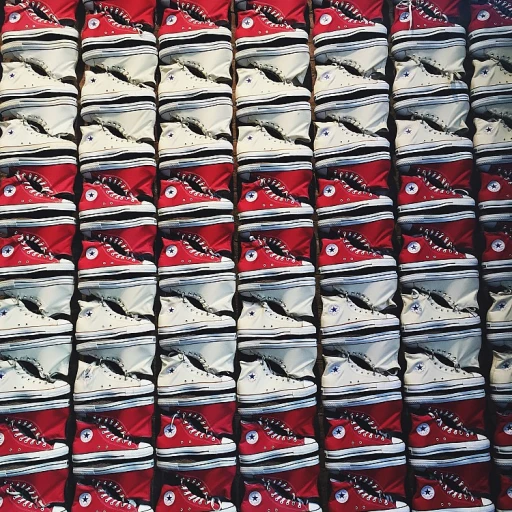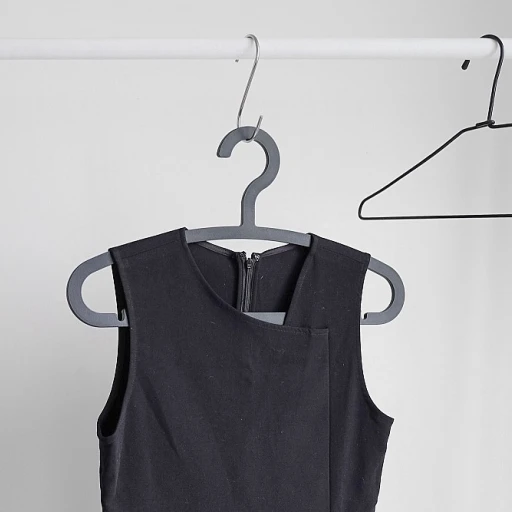Deciding what to sell: filtering through your child's wardrobe
Filtering through Your Child's Wardrobe
As your kids outgrow their clothes at lightning speed, you're often left with a mountain of garments that are too good to discard. Sifting through your child's closet is the first step to reclaiming space and potentially earning some money back. Begin by considering the condition of the clothing. Are they gently worn, or are they showing signs of significant wear and tear? A kids' consignment shop will value items that are in good condition, with no stains, holes, or fading.
Another point to think about is the brand and style of the clothing. High-quality brands like Hanna Andersson or Tea collection tend to fetch a higher resale value. Seasonality also plays a role; selling coats in winter or swimsuits in summer aligns with demand. Don't forget to check for timeless pieces in your kid's collection. Classic items, such as a well-constructed denim jacket or a formal dress, often have a longer sales life. For more insights into selecting the right items for your child's needs and tastes, visit our guide on crafting a sensory-smart wardrobe.
It's worthwhile thinking about sets and how pieces can be combined. Selling outfits or coordinating separates can make your listings more attractive. Buyers appreciate the ease of a put-together look, especially when it comes to kids whose parents are looking to buy multi-item hauls.
Finally, don't overlook the power of the story behind the clothes. If an item was barely touched or has a unique background, these details can appeal to buyers on an emotional level, making your offers stand out in the busy marketplace where parents continually look for the best for their children.
Pricing strategies: how to set fair prices for pre-loved kids clothes
Understanding Price Points for Pre-loved Threads
For parents knee-deep in outgrown rompers and barely-worn sneakers, finding out where can i sell kids clothes often starts with a clear-cut strategy for pricing. Kiddie clothing can range from high-end designer duds to everyday play wear, so striking the right balance when setting price tags is key to successful selling.
Let's get down to the nitty-gritty of pricing these pre-loved treasures. A handful of factors will affect the cost you can reasonably set: brand popularity, garment condition, and current market trends, to name a few. In practice, it's not uncommon to see items listed at around 30 to 40 percent of the original retail price, if they're in excellent nick. A 2019 report disclosed that resale prices in the kid's segment are generally lower, reflecting their quick turnover rate.
It isn't rocket science, but it might require a 'little' elbow grease to get it right. You have to know your audience. Fashion-savvy parents hunting for a Hanna Andersson jumper or Tea Collection items aren't shy to invest a tad more for quality. Yet, items from Old Navy or H&M might have to be priced more sensibly to stir up interest.
Account for Wear and Tear
Even if you're a legend at scrubbing out grass stains, wear and tear is part and parcel of children's clothing. A consignment pro, such as those at Swap.com, could tell you that items with visible signs of wear are tougher to sell unless slashed at a fairly discounted rate. A study from Kidizen highlights that buyers tend to gravitate towards listings that show items in almost-new condition. This illustrates the need for precise and transparent descriptions when setting your prices.
Market Pulse on Trendy Tots
Sometimes selling is less about the 'what' and more about the 'when'. Seasonal shifts and pop culture can pivot what's hot and what's not. Savvy sellers keep an eye on trend reports from powerhouses like Nordstrom and Gymboree to stay ahead. As Brooklyn-based children's clothing expert and author of 'Rags to Riches: Selling Kid's Wear in the Digital Era', Emma Klein, notes, "Parents' desire for Instagram-worthy garments drives a specific market expected to reach maturity in the coming years."
Klein's insights are backed by another industry study, revealing that 65% of parents admit to being influenced by social media trends when purchasing children's wear. Hence, an adorable Disney or Mini Boden piece priced just right might just fly off your virtual shelves in no time. Selling is not merely about the act itself; it's also about presentation, season, and aligning with consumer desires.
Online consignment shops: a digital solution for selling kids clothes
Discovering Digital Consignment: A New Era for Selling Kids' Wear
With the proliferation of technology, there's been a transformative shift in how we handle pre-loved items, especially children's attire. Looking past traditional methods of selling, parents are now turning to online consignment shops as a viable and often lucrative channel. These platforms not only streamline the selling process but also cast a wider net, reaching potential buyers across the globe.
Choosing the Right Platform for Your Items
When selling online, the choice of platform can greatly affect your success. Sites like Swap.com, Kidizen, and Poshmark are popular for their ease of use and dedicated audience searching for children's clothing. Platforms like these often offer a calculated commission or fee, which should be considered when setting your pricing strategy. Detailed in a previous discussion, pricing your items competitively while considering these additional costs is crucial for making the most of your online selling experience.
Engaging With a Community of Like-Minded Sellers
Community engagement is at the heart of digital consignment shops. Not only do these spaces provide a marketplace, but they also foster a network of parents and caregivers looking to buy and sell kids’ clothes. The social aspect, akin to the local consignment experience, creates a sense of trust and camaraderie as you engage with potential buyers, sharing advice and even fashion tips for the little ones—perhaps even highlighting how a pair of stylish sneakers can be the perfect complement to any outfit.
Maximizing Exposure and Sales
To increase the chances of your items selling, it's recommended to use well-lit, clear images along with detailed descriptions—tips on achieving that are shared in later advice. Moreover, many online consignment shops have features that allow sellers to promote their listings for a small fee, potentially boosting visibility and sales.
The Sustainability Bonus
By choosing to sell through online consignment shops, you are part of the growing movement towards sustainable fashion. Parents recognize the value in extending the life of garments, contributing to a cycle that is not only economically rewarding but also environmentally conscious, as mentioned in the sustainable selling segment.
User-Friendly Operations
An undeniable advantage of these platforms is their user-friendly approach. They oftentimes take care of logistical concerns such as payment processing (securely handled by services like PayPal or Apple Pay) and shipping (with guidance or partnerships from carriers like UPS or USPS), simplifying the process for sellers who may not have extensive experience in e-commerce. This ease of use encourages even the most tentative users to participate in the circular economy of children's fashion.
There's an undeniable convenience to selling your kids' outgrown apparel on your own terms, from the comfort of your home. With the right strategies in place for pricing and presentation, online consignment shops could be the key to unlocking a new way of decluttering closets and earning extra income.
Social media savvy: using platforms to sell kids fashion
Embracing the Digital Marketplace
Grab your smartphone and get ready to showcase your kid's fashion sense to a broader audience. Social media isn't just for keeping up with friends or the latest dance crazes; it's a powerhouse tool for monetizing those hardly worn children's outfits. A staggering percentage of parents are leaning towards platforms like Instagram and Facebook Marketplace to sell kids clothes.
Creating a Captivating Online Presence
Leveraging the visual nature of platforms, an eye-catching photo of your child's barely used Tea Collection items can stir interest far more effectively than a traditional marketplace listing. Detail in your posts how the vibrant colors haven't faded, or how these Hanna Andersson pieces can withstand playdates and playground adventures.
Followers empathize with stories; share a personal anecdote of your child’s first day in that adorable Mini Boden dress, and let them imagine their child's milestones in it.
Hashtags and Timing: The Unseen Sellers
Understanding the strategic use of hashtags and posting times maximizes views and potential sales. Research indicates that specific tags relating to #KidsFashion, #PreLovedKids, and #SustainableFashion can lead potential buyers right to your closet. Similarly, studies suggest that posting in the evening when parents are scrolling through their feeds, increases the likelihood of a sale.
Community Building: Trust in Transactions
Selling on social media is not just about posting; it’s about engaging with your audience. Establish a connection with fellow parents, swap stories about how quickly kids grow clothes fast, and offer advice on sizing. This trust isn't just good manners, it's good business. According to experts like marketer Jenna Kutcher, author of 'The Small Business Start-Up Kit for California,' trust can lead to repeated customers and referrals, driving more sales to your social media doorstep.
Turning Likes into Sales
Finally, every comment and like is a potential sale. Ensure you’re quick to respond to inquiries and transparent about product quality and shipping details. Be clear about payment methods, whether you prefer PayPal, direct bank transfers, or secure services like USPS shipping with tracking. This transparency and attentiveness can turn your child's outgrown clothes into another child's treasure, all the while giving parents like you the chance to declutter and earn.
The power of apps: convenient tools for selling children's clothing
Unlocking the Potential of Kidswear Through Mobile Applications
As garments for your little ones are outgrown almost as quickly as they're bought, there's a growing trend in parents turning to their smartphones to find the best ways to recirculate kids' fashions. Mobile apps offer a direct, user-friendly channel to declutter wardrobes while recouping some of the original investment. But with numerous apps to choose from, positioning your child's garments to get noticed is key.
Firstly, identify the most popular apps where parents frequent to buy and sell children's clothing. Platforms like Kidizen and Poshmark are bustling digital marketplaces where you can list items individually or in bundles. These apps typically have a user-friendly interface and a comprehensive system for categorizing items, making it easier for potential buyers to find what they're looking for.
Price setting on apps can be influenced by factors such as brand recognition and item condition. For instance, brands like Hanna Andersson and Mini Boden hold their resale value well and are often sought after. By indicating the brand name prominently and including mixed lots of favorite brands, your listing can attract more views and potential sales.
When selling on apps, always consider the fees involved. Some apps charge a listing fee or take a percentage of the sale price, which should be factored into your pricing strategy to ensure profitability. Moreover, presenting your kids' clothing with clear, well-lit photos and detailed descriptions mentioning size, condition, and brand heightens the chances of your items selling. Use natural lighting and a clean background to highlight the clothes and provide a realistic display of colors and textures.
Lastly, while functionality remains paramount, selling through apps extends beyond mere transactions; it's about community and trust. Garnering good reviews and building a reputable seller profile can lead to repeat customers and referrals. Remember, consistency in communication and transaction transparency will maintain customer satisfaction and can lead to a hassle-free selling experience.
As you think of giving those pre-loved outfits a new home, leveraging apps not only simplifies the selling process but also supports sustainable fashion practices — a small step towards a greener planet for our children's future.
Local consignment shops: building community while you sell
Building Community Connections
While the digital space offers a plethora of options for decluttering your child’s closet, local consignment shops present a unique opportunity to engage with your community. Selling gently used clothing through these shops not only supports local businesses but also keeps items in circulation within your area, minimizing your carbon footprint. An expert insight from Hanna Andersson, a legend in children’s fashion, suggests children outgrow their clothes so rapidly that local consignment becomes a practical choice for parents seeking sustainability.
According to recent data, nearly 40% of parents prefer to buy second-hand children’s clothing, highlighting a growing trend towards more environmentally conscious shopping habits. Consider how this aligns with the discussions on sustainable selling practices you've previously read about, showing not only the environmental, but also the economic benefits of participating in the second-hand market.
Selecting the Right Shop
Finding the right consignment shop is akin to selecting the best online store or app for selling kids’ wear; it’s about finding a match for your items’ style and quality. Look for stores with a good reputation, positive customer feedback, and ones that cater to the specific brands or styles your clothing fits into, such as Tea Collection items for specialized boutiques or everyday wear like Old Navy for general stores.
Reports such as the Kids Clothing Resale Market report of 2022 have shown that stores which specialize in certain brands or age groups perform better in sales, providing a niche market for your clothes. It's not just about where can i sell kids clothes, but about where your clothes will sell best.
Understanding the Consignment Process
The process typically involves bringing your items in for assessment, after which the shop decides which pieces to take and at what price they will sell. While setting prices, keep in mind the pricing strategies you’ve learned about. Most shops split the sale price with you, with common splits being anywhere from 40-60% in your favor. Prior research on how to set fair prices can give you a solid footing when it comes to negotiations.
A case study of a successful selling strategy at a Brooklyn kids consignment store showed that sellers who were open to negotiating fair compensation saw an increase in repeat business, emphasizing the importance of establishing a good relationship with the store owners and community.
Seasonality and Demand
Dressing children in season-appropriate clothing means there’s always a cycle of in-demand items. Align your selling with the seasons; swimwear in summer, for example, finds eager buyers more readily. This is where your knowledge from previous sections on maximizing sales and the importance of descriptions will come in handy, as presenting your clothes as must-have items of the season can significantly increase their saleability.
An expert book 'The A-Z of Kids Fashion' by leading children's fashion expert Dr. Sandra Miller notes that the demand for seasonal items often results in increased prices and a quicker sale rate. So tapping into the seasonal trends is not just a good practice for retailers but can be beneficial for individual sellers too.
Maximizing sales: photography and description tips for online selling
Snap It Right: Quality Photos Sell Faster
When you've got a pile of kids clothing to sell, the first impression potential buyers will have comes from your photos. A crystal-clear image can spotlight the vibrant patterns of a Mini Boden dress or the barely-worn treads on Adidas sneakers. Ensure each item is well-lit, preferably with natural light, and captured from multiple angles to showcase its condition and details. If it's brand-name gear, a close-up of the logo can confirm its authenticity and help justify your asking price.
Descriptions That Tell a Story
After nailing the photography, focus on crafting a compelling narrative for each item. A Hanna Andersson onesie isn't just gently used—it's a cozy cotton hug that's seen a handful of bedtime stories. Include measurements, fabric content, care instructions and any unique details or quirks about the item. Remember, parents are looking for the best for their kids, so your description should reinforce the value and longevity of each piece.
Keywords are Key
In the realm of online selling, specific keywords can make or break a sale. Use phrases parents might search for, such as "kids consignment shops" or "pre-loved kids clothing." However, steer clear from stuffing your listing with too many terms; it should read naturally, as if you were explaining the item to a friend over coffee. Utilize bullet points for key features to make the list easy to scan. This strategic use of language not only helps in selling but also improves search visibility in platforms like Poshmark, Kidizen, or even Facebook Marketplace.
Timing Matters in Fashion
Consider the season when listing items. A North Face jacket or a Tea Collection sweater will sell more readily in the chilly months, while baby swimsuits and Old Navy shorts are summer favorites. By aligning your sales with the season, you're more likely to find buyers quickly, which means more space in your closets and more funds for the next size up.
Factor In the Finer Details
Disclose the state of the item with honesty. If there's a tiny stain on the collar of a Gymboree top or a missing button on a Disney Princess dress, let buyers know. Full transparency builds trust and reduces the chance of unhappy customers or returned items. It could be the difference between a one-time sale and cultivating a loyal customer base that'll return as their kids grow clothes fast.
Sustainable selling: contributing to eco-friendly practices
Embracing eco-conscious commerce
When you decide to part with your little one's outgrown outfits, you're already taking a step towards a more sustainable lifestyle. But the journey doesn't stop at simply selling those items. The decisions you make on how and where to sell can have significant implications on our environment. For instance, opting for local sales could mean fewer emissions due to reduced shipping needs. Experts in sustainable commerce encourage parents to consider the carbon footprint of their selling practices. As clothing production accounts for a considerable percentage of the world's pollution, extending the life cycle of kids' garments is more than a financial gain; it's crucial to our planet's health.
Choosing the green path
Selecting online platforms that prioritize sustainability can bolster your eco-friendly efforts. Look for sites that offset their carbon emissions or use eco-conscious packaging. Even the small act of using recycled materials for shipping contributes to an immense collective impact. Several studies, including one by thredUP, show that buying second-hand can reduce a garment's carbon footprint by up to 82%. Selling your kids' clothes on platforms committed to green practices aligns with the positive environmental choice you've made.
Building a circular fashion cycle
As we filter through our children's wardrobes and set fair prices for their clothing, we become key players in the circular fashion economy. By rehoming these garments, you're not just earning back some of the item's value; you're also helping to reduce the demand for new productions. A report by the Ellen MacArthur Foundation underscores the importance of a circular economy, where resources are used for as long as possible. Your choice to sell not only supports this sustainable loop but also educates potential buyers on the value of pre-loved items, paving the way for a more conscientious consumer mindset.
Clothing care and longevity tips
Moreover, include in your listings care instructions and tips for maintaining the quality of the clothes. Share your experiences with durable brands like Hanna Andersson or Mini Boden, which are renowned for their longevity and hence, are ideal for resale and continued use. Not only does this information empower buyers to keep items in rotation longer, but it also highlights your commitment to quality and sustainability—two key trends in today's children's fashion market.
Transforming habits, one garment at a time
Selling kids' clothes with sustainability in mind is not just a transaction—it's part of a larger movement toward environmental responsibility. Collective actions such as these can significantly influence industry trends and encourage larger brands to adopt eco-friendlier practices. As you master the art of online selling and make the most of social media platforms, remember that your efforts extend beyond financial gains; each piece of clothing sold is a step toward a more sustainable future for fashion.







-large-teaser.webp)

